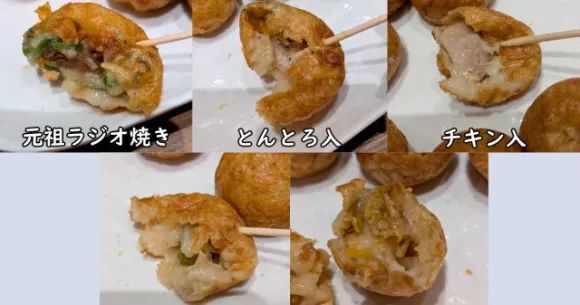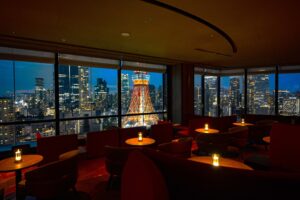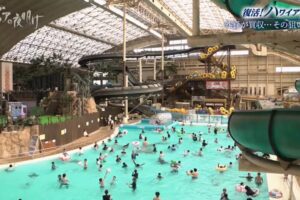
Our ace reporter learns that the fried balls of octopus in Kansai are not quite what he expected.
Many people associate the Kansai region of Japan with takoyaki, the quintessential savory street-food snack of Osaka. Balls of batter are filled with chunks of octopus and cooked on a special indented griddle. They’re then served pipping hot, often with a variety of toppings such as sauce and bonito flakes.
Now, our Japanese-language reporter Mr. Sato grew up in Shimane Prefecture, which may seem close to Osaka to people from Tokyo, but it’s actually quite far. The food culture is also nothing alike between the regions. Thinking back on it, Mr. Sato can count on one hand the number of takoyaki specialty shops in the city where he grew up. The snack was usually something that he purchased from food stands during summer festivals.
Recently, on his way back from a work trip in Wakayama Prefecture, he decided to make a quick stop in Osaka’s Namba district. Before long he found himself inside of the Namba NamNam underground shopping complex, and an intriguing sign suddenly came into his view.
▼ “Aizuya: The birthplace of takoyaki”
Yes, it turns out that this restaurant, Aizuya, claims to have invented one of Japan’s most beloved snacks. It has even been featured in a Michelin Guide as a “B-Class Gourmet” food recommendation for Osaka.
A steady stream of customers was going in and out of the restaurant despite it being after lunchtime, so Mr. Sato took that as a good sign. He walked inside and was greeted by a menu that showed the different size options for Aizuya’s original takoyaki, ranging from 8 pieces for 500 yen (US$3.30) to 20 pieces for 1,150 yen.
You might think that a restaurant specializing in one dish would make it easy for him to decide on his order, but he was wavering because there was actually than just takoyaki on the menu. For instance, he would probably enjoy the combo meal that came with octopus sashimi, or the one that came with oeuf mayo (simply put, a small dish of egg and mayo). There was also a set with salted yakisoba and another that came with Osaka craft beer.
But wait, because there were also four types of specialty takoyaki and five octopus-less types dubbed “radioyaki” filled with other meats and seafood that were cooked to order. Radioyaki is said to be the precursor to takoyaki that was also invented by Aizuya.
Another featured menu item was a series of akashiyaki, round balls made of egg and flour with various fillings that originated in nearby Akashi, Hyogo Prefecture.
Mr. Sato was completely lost at this point and stared at the menu for about 10 minutes in desperation. Eventually, his brain’s gears swung into action and he decided the smartest choice would be to order one of the three variety course offerings to compare and contrast more than one menu item. He decided to spring for the B course, which came with six small dishes for 1,800 yen.
While waiting for the takoyaki to cook, he quenched his thirst by ordering a mixed fruit juice for 450 yen. This juice is said to have originated at Sennariya Coffee in Osaka’s Shinsekai district and is now considered to be another local specialty.
The first batch of his food arrived! It was eight pieces of the original takoyaki. While takoyaki usually comes with some sauce and other toppings, it was clear that Aizuya wanted to showcase the premium taste and texture of its dish by serving it unadorned.
Taking a bite, Mr. Sato noted the seasoning incorporated throughout the dough. It was curious because this version was a little different than the mental image and taste of takoyaki that he knows–which, to him, should be slightly bigger, more doughy balls like the kind served at popular takoyaki chain Gindaco. If these truly were the original takoyaki, though, his eyes and taste buds would have to stand corrected. They were crispy on the outside, fluffy on the inside, and had a airy overall quality–nothing like a lump of flour.
It was a good thing they were light, since he had five more dishes coming as part of his course meal. Each of the remaining dishes was from the radioyaki section of the menu and came as four pieces each. In other words, he had 28 pieces of food in total. Maybe the courses weren’t meant for only one person–but thankfully, Mr. Sato is no ordinary person when his stomach is concerned.
From left to right going clockwise, the remaining types were Aizuya’s original radioyaki (filled with beef sinew, konnyaku, and green onions), fatty pork radioyaki, chicken radioyaki, pork asparagus radioyaki, and buttered scallop radioyaki. Mr. Sato had had no idea that this older cousin of takoyaki could be filled with so many things other than octopus, and they were all really good. Ultimately, however, he still liked octopus the best, and decided that it was inevitable that radioyaki had evolved into takoyaki about 90 years ago.
If you won’t be stopping by Osaka like Mr. Sato in the near future but still want to try takoyaki during your time in Japan, we recommend checking out this takoyaki specialty shop in Tokyo instead.
Restaurant information
Aizuya Namba branch / 会津屋 ナンバ店
Address: Osaka-fu, Osaka-shi, Chuo-ku, Namba 5, inside of Namba Nan Nan (basement floor)
大阪府大阪市中央区難波5丁目 NAMBAなんなん内(地下街)
Open: 11:00 a.m.-10:00 p.m.
Closed: Third Thursday of odd-numbered months
All images © SoraNews24
● Want to hear about SoraNews24’s latest articles as soon as they’re published? Follow us on Facebook and Twitter!
[ Read in Japanese ]
Like this:
Like Loading…





